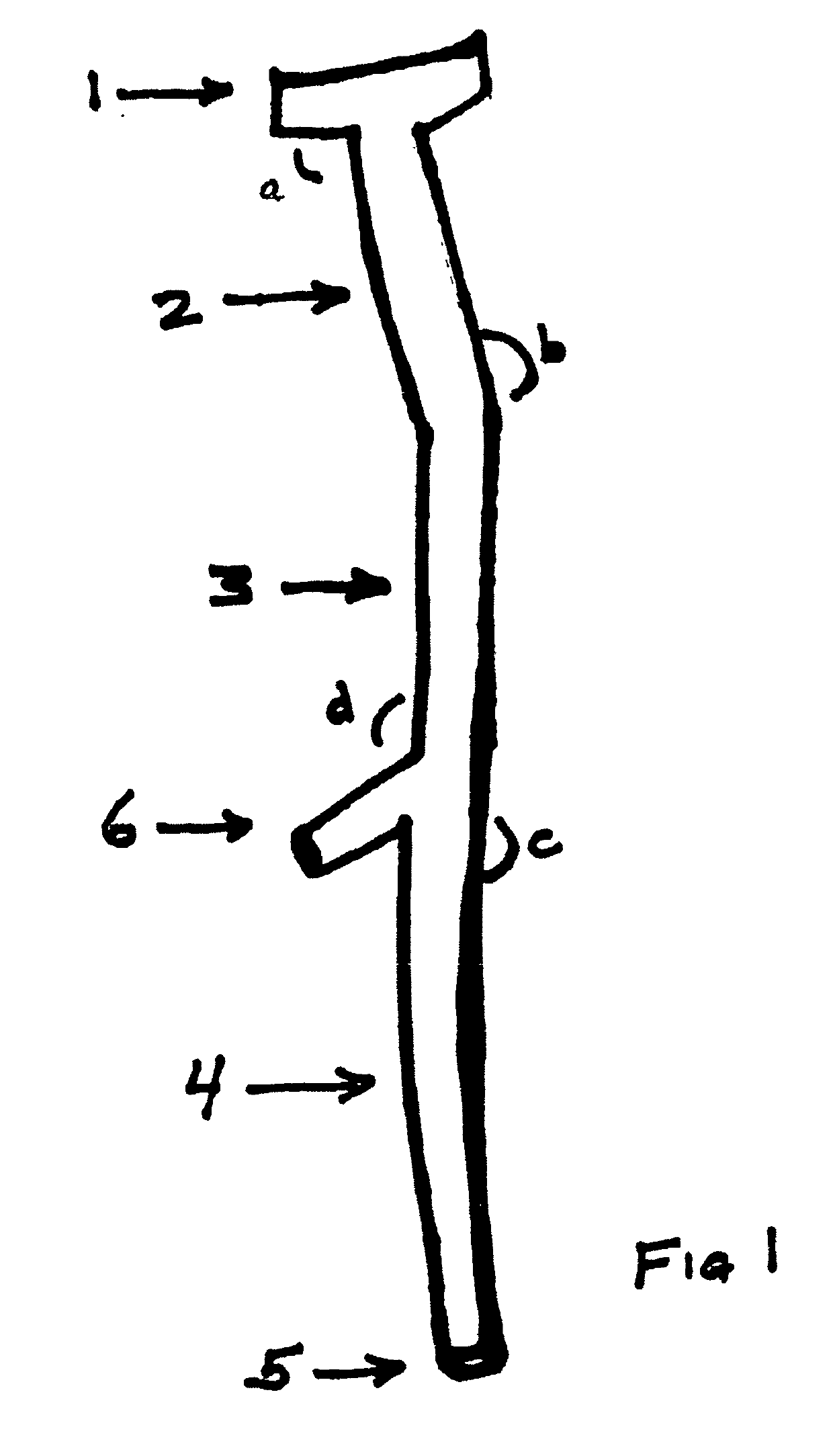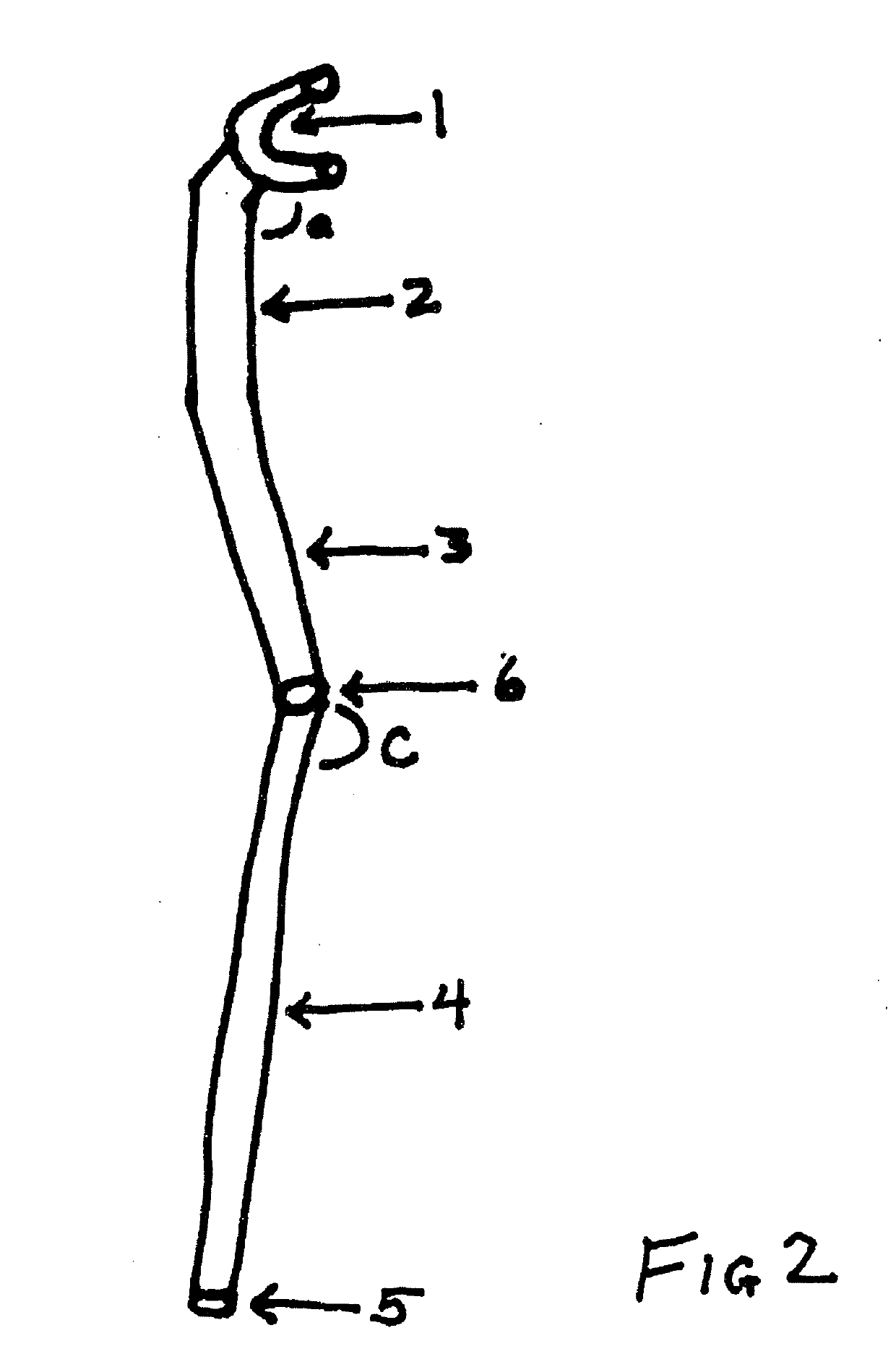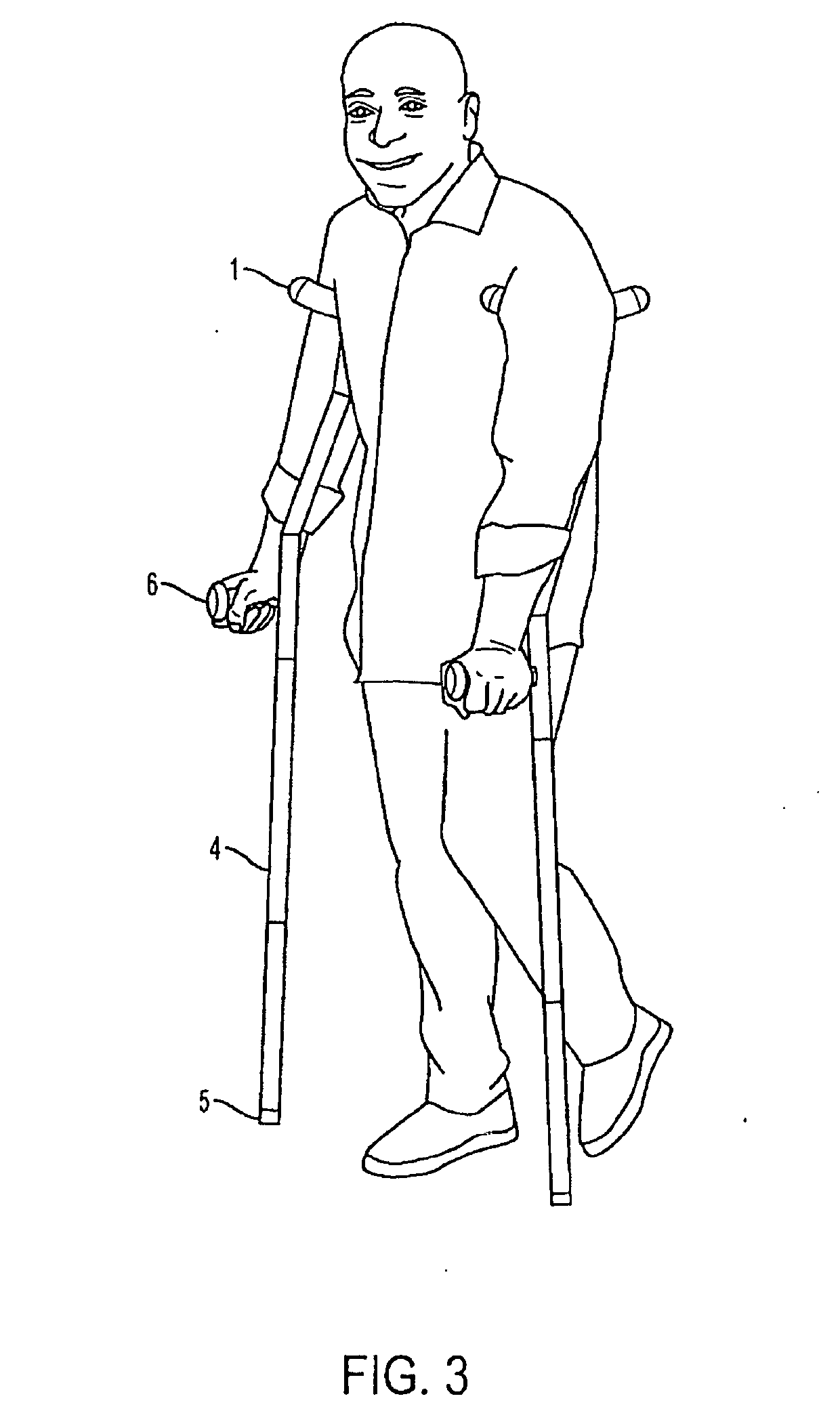Ergonomic crutch
a crutch and ergonomic technology, applied in the field of medical devices, can solve the problems of user's arm or elbow swelling, injury to the user's axillary nerve, vessels and tendons, and user's arm or elbow injury, and achieve the effects of reducing injury to the user, supporting the user's weight, and ensuring stability
- Summary
- Abstract
- Description
- Claims
- Application Information
AI Technical Summary
Benefits of technology
Problems solved by technology
Method used
Image
Examples
Embodiment Construction
[0032]Referring to the drawings, the invention is a novel crutch comprising a series of elements angled with respect to each other in three orthogonal planes at specified angles or ranges of angles so as to provide a stable platform for supporting a user's weight while reducing injury to the user's axillary and carpal nerves and tendons. A first preferred embodiment of the crutch is shown in overview in FIGS. 1, 2 and 5 and in use in FIG. 3. A second preferred embodiment is shown in FIGS. 4 and 6.
[0033]As illustrated in FIGS. 1 and 5, the invention comprises a crutch having an axillary support (1) at one end designed and angled to fit under a user's axilla as shown in use in FIG. 3, connected at an angle (a) to an upper shaft segment (2) which in turn is connected at an angle (b) to an intermediate shaft segment (3) which in turn is connected to a lower shaft segment (4) at an angle (c); the lower shaft segment terminates in a tip (5) suitable for making contact with the ground; bet...
PUM
 Login to View More
Login to View More Abstract
Description
Claims
Application Information
 Login to View More
Login to View More - R&D
- Intellectual Property
- Life Sciences
- Materials
- Tech Scout
- Unparalleled Data Quality
- Higher Quality Content
- 60% Fewer Hallucinations
Browse by: Latest US Patents, China's latest patents, Technical Efficacy Thesaurus, Application Domain, Technology Topic, Popular Technical Reports.
© 2025 PatSnap. All rights reserved.Legal|Privacy policy|Modern Slavery Act Transparency Statement|Sitemap|About US| Contact US: help@patsnap.com



